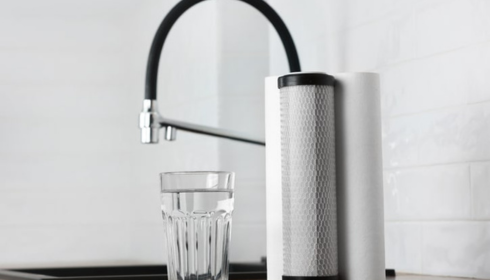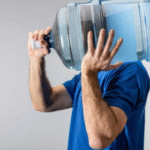There’s something about pouring yourself a glass of water at home that should feel… simple. You turn the tap, fill the glass, and take a sip. But if you’ve ever caught that faint chlorine smell or noticed an off-taste, you know it’s not always that straightforward. Clean water is no longer something we can just take for granted—it requires a little thought and the right setup. That’s where smarter filtration systems come in, offering not only healthier water but also peace of mind.
I’ve spent enough time fiddling with filters and reading homeowner forums to see how much confusion there is around installations, replacements, and picking the right products. Let’s break it down in plain English—no jargon, just practical advice.
The Case for Reliable Filtration
Most tap water in the U.S. is technically safe to drink, thanks to municipal treatment plants. But “technically safe” doesn’t mean pleasant, and it doesn’t always mean free of contaminants like microplastics, lead from old pipes, or simply too much chlorine. Over time, these little extras can affect everything from your family’s health to the taste of your morning coffee.
That’s why more households are installing dedicated filtration systems. They don’t just “fix” the water—they elevate the experience of using it. Whether you’re cooking pasta, filling a pet bowl, or rinsing fresh veggies, you’ll notice the difference.
Taking the DIY Route with Brand-Specific Filters
One of the most common questions homeowners face is how to install a filter that pairs with their appliances. For example, if you own a Maytag refrigerator, you’ll eventually deal with the process of Maytag water filter installation. The good news? It’s far less intimidating than it sounds. Most newer fridges are designed with easy-to-access filter slots, meaning you’re usually looking at a quick twist-and-lock replacement.
The trick is knowing when to swap them. Typically, every 6 months is recommended, but that depends on water quality and usage. If ice cubes start tasting funky or your water flow slows down, that’s your fridge practically waving a flag at you.
The Unsung Hero: Carbon Pre-Filters
While fridge filters get the spotlight, there’s another piece of the puzzle that deserves attention: the carbon pre-filter. If you’re running a more advanced whole-house or under-sink filtration system, this component is your first line of defense. It catches chlorine, sediment, and other impurities before water even makes it to the final stage.
Getting a carbon pre-filter replacement service isn’t just maintenance—it’s insurance. A clogged or worn-out pre-filter forces the rest of your system to work harder, which shortens its lifespan. Think of it like changing the oil in your car. Skip it, and you’ll pay for it later.
Choosing the Right Filter for Home Use
Here’s where things can feel overwhelming: the sheer number of filter options out there. Pitchers, countertop units, under-sink systems, whole-house filters—the aisle at your local hardware store or the endless Amazon listings don’t make it easy.
But here’s a simple rule of thumb: match the filter to your household’s lifestyle. A family of four with kids might want something more robust than a pitcher, while a single professional could get by with a smaller setup. If you’re after strong, all-around performance, many experts suggest going with the best carbon water filter for home. Carbon technology is reliable, versatile, and handles a broad range of contaminants without costing a fortune.
Why Professional Help Still Matters
Let’s be honest—DIY has its limits. Sure, popping in a refrigerator filter is one thing, but full-system installations or complex replacements often benefit from professional hands. That’s not just about doing it “right”; it’s about safety. A poorly fitted filter can cause leaks, mold growth, or even water damage.
And here’s another overlooked point: local professionals know your region’s water issues better than you do. If your city has hard water, sulfur odor, or seasonal algae spikes, a local service provider will already have solutions fine-tuned for those problems.
Making Maintenance Part of the Routine
One thing people often underestimate is the importance of consistent maintenance. Water filtration isn’t a “set it and forget it” deal. Filters wear out, cartridges clog, and water quality shifts over time. Building a habit of checking your system—say, every 3 months—keeps things smooth.
I like to treat it the same way I do with smoke alarms: a quick check tied to a routine event, like the start of a new season. Replace the batteries in your smoke alarm? Check your water filter, too.
The Subtle but Big Payoffs
Investing in good filtration isn’t just about health (though that’s obviously huge). It’s also about quality of life. Your tea tastes cleaner, your pasta water doesn’t smell odd, and even your shower feels different without heavy chlorine. If you’ve ever noticed your skin drying out after a shower, filtration can help reduce that, too.
Then there’s the environmental angle. With a reliable system, you’re far less tempted to buy bottled water, which means fewer plastic bottles ending up in landfills—or the ocean.
Final Thoughts: Making Water Work for You
Here’s the thing—filtration isn’t glamorous. Nobody brags about their new under-sink carbon filter at dinner parties. But when you get it right, it becomes one of those invisible upgrades that quietly makes life better every single day.
Start small if you have to. Replace your fridge filter, schedule that pre-filter service, or research a solid carbon filter for your home. Over time, these small steps add up to healthier water, fewer headaches, and a little more confidence in what you’re drinking.
In the end, water should feel like the simplest part of your home. Clean, crisp, and convenient. And with the right setup, it really can be.



